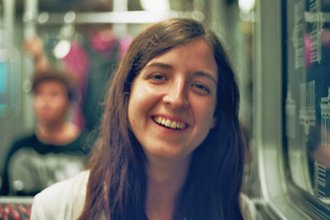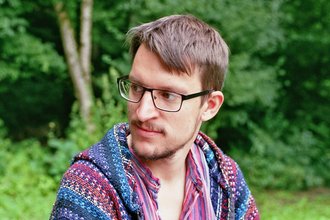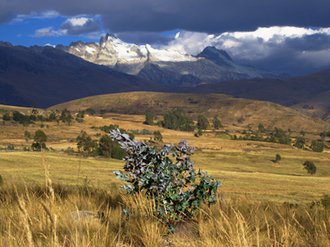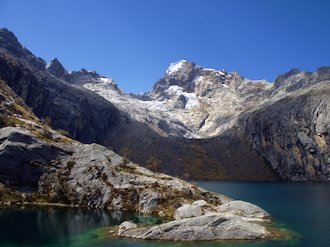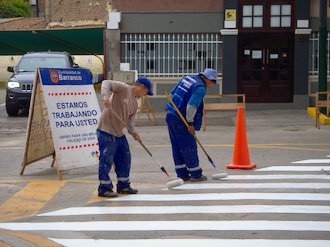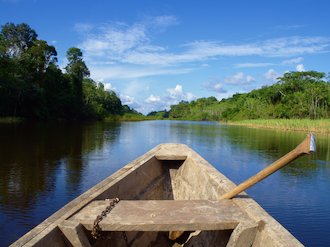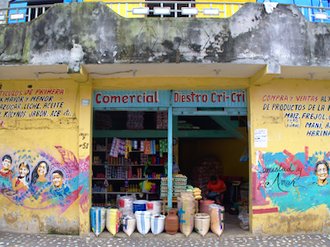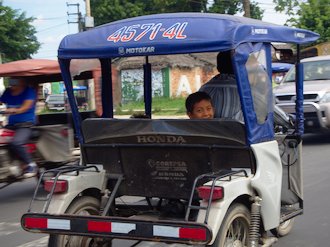
We have left Cusco in the meantime — after three weeks! I don’t know there the time went, but I enjoyed the time here very much. One thing which impressed me a lot there is the Greenpoint restaurant. After eating in this (vegan) restaurant a couple of times, we got to know the owner and some people in this environment and became friends with them. At first I thought this was just a single restaurant with a couple of people working there. But as it turns out there are around 70 people working in the environment of the restaurant! There was much more going on than I had glimpsed at first. The main reason why there are so many people involved is because they make practically all their ingredients by themselves — vinegar, kombucha, vegan chesse, the bread for burgers and sandwiches and appetizers, sauces, jam, yoghurt, milk, …. A reason is to guarantee high quality and to be sure where stuff is coming from and how it was made. That it is nevertheless possible to operate a very reasonably priced restaurant amazed me a lot. Furthermore, they offer cooking courses where it is possible to learn how to prepare any of the meals from the restaurant. I find this amazing, it is a very transparent way to operate a restaurant for people to be able to see how things are prepared. Also there was no resistance at all to pass on recipes or knowledge. To me this is in stark contrast to “average” restaurants where you can’t dare to ask for the recipe of e.g. a certain sauce.
As a next stop in Peru we have come to the city of Iquitos, which is located deep in the peruvian jungle. Iquitos is the largest city in the world which is accessible only by plane or boat. There are no streets to the city, the airport is very small and the boat takes a couple of days along the amazon to get there. This “endless jungle” makes quite a nice view from the airplane. Since the city is hard to access, a certain culture has established there. For example, there is a lack of cars, since it is much cheaper to get a motorcycle there. A fitting quote from Wikivoyage is: “As a city not accessible by road, motorcycles and mototaxis dominate unlike anywhere else. Imagine if an American style biker-gang had taken over a city.” When on the road you are always in a bulk of motorcycles and mototaxis and sometimes one can’t help but feel like part of a biker-gang when driving around. The vibe and culture here is completely different to the Peru that we have seen so far — which was so far only the mountain region. In fact, when first driving through the city I thought I was back in Thailand: palms everywhere, very hot and tropical, much humidity, a lot happening outside on the streets in the evening, open houses without windows, many many motorcycles and bikes. And insects of course! They usually seem grotesquely oversized and there is a tick too much of them everywhere. Furthermore there are so many fruits available here of which I have never heard before — aguaje, cuma-cuma, cocona, …. So it is possible to get quite unique juices and jam here and it was a joy to try different things.
In the last days we have done an extensive jungle tour here by which I was very impressed. It was very interesting to see this different side of Peru and our visit in this city was quite worth the effort of getting there. First of all, Iquitos is situated right besides the amazon river. I always thought this is “just” a long river, similar to the ones in Europe. But I was quite mistaken and indeed very impressed by its dimensions. I think this is one further thing which one has to experience to really grasp the dimensions (like e.g. Machu Picchu). The amazon river here is about 1.5 km wide and 4-5 meters deep. In Brasil the river gets even wider. When moving in a boat it sometimes feels as if one is on a sea, rather than on a river. From the city we drove up the river for about 2 hours and then into a sidearm for a while. There we reached a small lodge in the jungle where we stayed for three days. Each day we made explorations with our guide — a native of 30 years who got born in the jungle, grew up here, and has lived here all his live. The last time he visited a city was ten years ago. During our excursions we experienced a lot of the jungle environment, went for walks in the jungle, did piranha fishing, swam with wild dolphins, etc.. Our guide even catched a wild alligator from the river. Crocodile Dundee style. The walks in the jungle were extremely interesting, experiencing this kind of fauna and how its conditions are opposed to anything remotely comfortable. There are so many layers of plants in it: the ground which is muddy everywhere, ponds of water, rotting trees, all kinds of plants competing, huge trees, palms, etc.. And all of it is so dense that you need to make a way with a machete. And when turning around you are oftentimes unable to determine where you just came from. Everything just gets back to its previous state so quickly! It is very exhausting to walk around and there are myriads of small (and large) animals that want to bite you. This is such an uncomfortable environment for humans that in my opinion a “jungle walk” is something you do only once. Overall our stay in Iquitos and the jungle was a very unique and enriching experience. The effort of getting there was very well worth the effort. I was very surprised by how much the culture and mentality here differ from the mountains.
I have heard that there are three regions with distinct mentalities and culture in Peru: the mountains, the coast, and the jungle. The coast is the last region which we are missing and the city we head to next is Lima — the peruvian capital which is located at the coast. So I am looking forward to find out how this hypothesis holds up.
In the meantime I have read another book: the infamous classic “American Psycho” by Bret Easton Ellis. Valerie got me interested in reading it, she had it on her reading list since quite some time and read it a couple of weeks ago (I guess the book is even more interesting to psychologists). During that time she always mentioned stuff from the book to me. I had seen the movie some years back and liked it a lot, so this got me interested in reading the book as well. The book was a very tough read though. Some chapters are quite disgusting and very violent and it sometimes was hard for me to read on. But I guess this is the overall literal genius behind the book: creating emotions such as arousal, disgust, and empathy in the same chapter. I am looking forward to rewatch the movie now and found it interesting to read up on literary analysis and interpretation after having finished the book.



